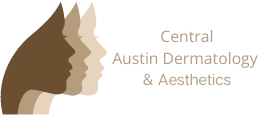What Are Warts?
Warts are small, harmless growths that appear most frequently on the hands and feet. Sometimes they look flat and smooth, other times they have a dome-shaped or cauliflower-like appearance.
Warts can be surrounded by skin that is either lighter or darker. Warts are caused by different forms of Human Papilloma Virus (HPV). They occur in people of all ages and can spread from person-to-person and from one part of the body to another. Warts are benign (noncancerous) and generally painless. They may disappear without any treatment. However, in most cases eliminating warts takes time.
Location and Types:
The location of a wart often characterizes its type:
- Common warts – appear anywhere on the body, although they most often appear on the back of fingers, toes and knees. These skin-colored, dome-shaped lesions usually grow where the skin has been broken, such as a scratch or bug bite.
Filiform warts look like a long, narrow, flesh-colored stalk that appears singly or in multiples around the eyelids, face, neck or lips - Flat (plane) warts – appear on the face and forehead. They are flesh-colored or white, with a slightly raised, flat surface and they usually appear in multiples.
- Plantar warts appear on the soles of the feet and can be painful since they are on weight-bearing surfaces. They have a rough, cauliflower-like appearance and may have a small black speck in them.
- Subungual and periungual warts appear as rough growths around the fingernails and/or toenails. They start as nearly undetectable, pin-sized lesions and grow to pea-sized with rough, irregular bumps with uneven borders.
Treatments?
- Most warts respond to common treatments, including:
- Cryotherapy, which freezes off the wart using liquid nitrogen or nitrous oxide.
- Electrosurgery, which sends an electric current through the wart to kill the tissue.
- Laser surgery, which essentially heat up the wart until the tissue dies and the wart eventually falls off.
- Salicylic acid preparations, which dissolve the protein (keratin) that makes up the wart and the thick layer of skin that covers it. It comes in gels, pads, drops, and plasters and takes 4 to 6 weeks to eradicate the warts.
If self-treatments don’t work after a period of about 4 to 12 weeks, contact our office. We’ll assess your warts and recommend the best option.
Always contact the dermatologist if a wart is causing pain, changes in color or appearance and for all genital warts.

